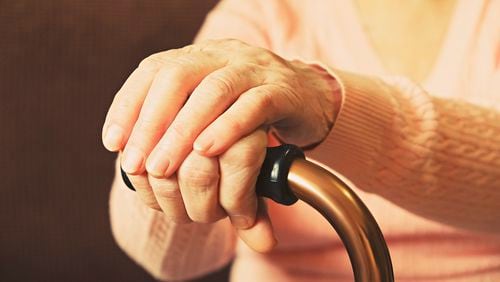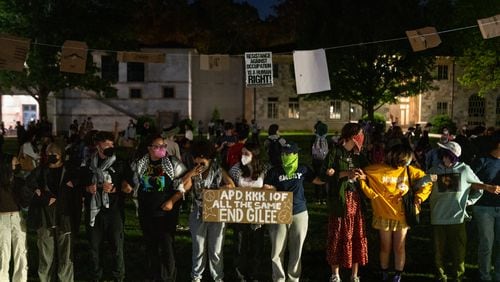Editor’s note: This story has been corrected to reflect the median length of stay in hospice care was 18 days in 2020.
Like former President Jimmy Carter, who turned 99 in October, many U.S. residents are turning to home hospice care when they’re diagnosed with a terminal illness.
The news about Carter, experts say, has helped raise awareness about home hospice, which allows people to end their days in their homes rather than in a hospital or a freestanding hospice facility.
Hospice care is not for those seeking treatment to cure a disease or illness. People generally enter hospice care when they have been given a terminal diagnosis of six months or less to live if the illness runs the expected course.
But it’s not one size fits all.
Some people live only a few days or weeks under hospice care, while others may live more than two years.
The median length of stay in hospice care was 18 days in 2020, according to the National Hospice and Palliative Care Organization.
The Carter Center announced in February that the former president had decided against further medical care and entered a home hospice program, making his stay now over 8 months. On Friday, the Carter Center said his wife Rosalynn has also entered home hospice care. Mrs. Carter, 96, has been diagnosed with dementia.
After six months with hospice, patients can be re-evaluated and recertified to stay in the program longer, depending on rules set by their insurer.
Medicare, Medicaid, private insurance and the U.S. Department of Veteran’s Affairs all offer hospice benefits, but rules for each vary.
The majority of patients under hospice care are on Medicare and their numbers have grown in recent years. In 2020, 1.72 million people received hospice care compared to 1.43 million in 2016.
Home hospice care is a choice patients and their families make, but they may consider inpatient alternatives, if appropriate, such as freestanding hospice facilities, hospitals and sometimes inpatient units or contracted beds located in nursing homes or hospitals, said Larry Hetu-Robert, bereavement manager and veteran liaison, for the Atlanta Vitas Healthcare program
According to Vitas, one of the leading providers of hospice services, patients may prefer a bed in a facility if they have uncontrolled pain, respiratory difficulties, or other needs that require close monitoring.
Home hospice services can be provided in an assisted living facility or nursing home, according to the National Hospice and Palliative Care Organization, although a private residence is the most frequent site of hospice care.
Generally when people reach that point, they’re interested in comfort care, the alleviation of pain and other symptoms related to the disease and the death and dying process, said Dr. David Mathis, a professor of medicine at Mercer University, and vice chairman of the Department of Medicine.
“By the time most patients come to this decision, they’ve fought the good fight,” Mathis said. “They’ve done all the chemo and radiation and all the surgery that they care to do. They really want to make that transition in the comfort of their homes. It’s really about death with dignity and I think home is where most people would prefer to die, surrounded by the people who love them.”
Another benefit of home care is it encourages serious conversations about death and end-of-life wishes, said Cara Wallace, a social worker and professor of the Dorothy A. Votsmier Endowed Chair at the St. Louis University School of Nursing.
Such conversations are often avoided or not talked about until the very end — if at all.
“The best use of hospice care is not just (enduring) the final days,” said Wallace. “It’s also about peace, dignity, the relationship with the provider and spending quality time with loved ones. It’s about experiencing the end as part of life. When people are dying they are still living. How can you make that time the best it can be in those circumstances.”
Carter’s decision to enter home hospice care has brought the topic to the forefront. “I’m so grateful to him and his family for sharing with the public,” said Dr. Joe Rotella, chief medical officer for the American Academy of Hospice and Palliative Medicine. “Not enough people ask for or benefit from how home hospice can help them.”
People in home hospice can be surrounded by family, their beloved pets, be in familiar surroundings or in their own beds. “It can be transformative. Some people actually do better than doctors thought they would because they’re focusing on what matters to them now,” Rotella said.
Home hospice has an interdisciplinary team that includes a physician, nurses, chaplain, home health aides and social workers. There’s bereavement counseling for the family. They may have pet or music therapy, he said.
While medical care is available 24/7, it might not always be in-person nurse care and might instead involve telehealth help for those in home hospice. Family members may have to be involved as caregivers or pay for outside help.
And patients may have to pay for room and board if they live in a facility, such as a nursing home, or for additional caregiving outside of what’s covered.
For many patients and their families, the decision to turn to hospice care can lead to peace and acceptance.
“We understand death and dying, sometimes more than their minister,” said bereavement manager Hetu-Robert, “We end up teaching ministers what is a good death. Patients have said sometimes they feel like they’re broken because they’re dying. We teach them they’re loved and cared for regardless of their disease.”
About the Author







